2017 Ski-Doo Snowmobile – First Impressions: Since the introduction of the REV platform in 2003, the Valcourt-based manufacturer has continuously held the #1 position in global snowmobile sales, which includes Ski-Doo and its European Lynx brand. The REVolution proposed at the time set a new standard in the industry for mass centralization. Addressing the historical imbalance between the front and rear of the vehicle, BRP has evolved the platform three times since then, each time offering significant improvements to the original concept. But, with the arrival of the 4th generation REV chassis, Ski-Doo is proposing a new balance in the industry, that is, an equal distribution of left and right weight. For the first time in the history of snowmobiling, a manufacturer has designed the chassis, engine and transmission together to create a new concept that is fully integrated in every way.
MXZ and next generation Renegade
One of the key elements that guided BRP engineers in their design was to take the concept of mass centralization to another level. At the last Snowshoot, they awakened us to a historical reality in the snowmobile world. In reality, the mass of a snowmobile’s drivetrain is always further to the left than to the right of the vehicle. This reality inevitably causes additional difficulty when turning to the right. The new REV chassis solves this problem with an integrated “chassis – drivetrain” concept that centralizes the left-right mass of the vehicle. During our spring testing, the experience was conclusive, as the handling of this new chassis, for both the MXZ and the Renegade built on the new chassis, was impressive. In addition to this fundamental change, the new “adaptive” driving position allows the rider to quickly switch from touring mode, to sport mode, to extreme mode. In the latter mode, the feeling of literally being able to lean on the ski during tight turns is phenomenal thanks to the open front steps and the shape of the ergo-step side panels. The bevelled tunnel design allows for a narrower seat and thus gives a superior handling impression typical of off-road motorcycles. Of course, the rMotion suspension in the rear complements this new snowmobile perfectly, as does the RAS-3 suspension in the front. The ergonomics of these sleds reach their peak with the new easy-to-use handlebar adjustment block, even on the move.
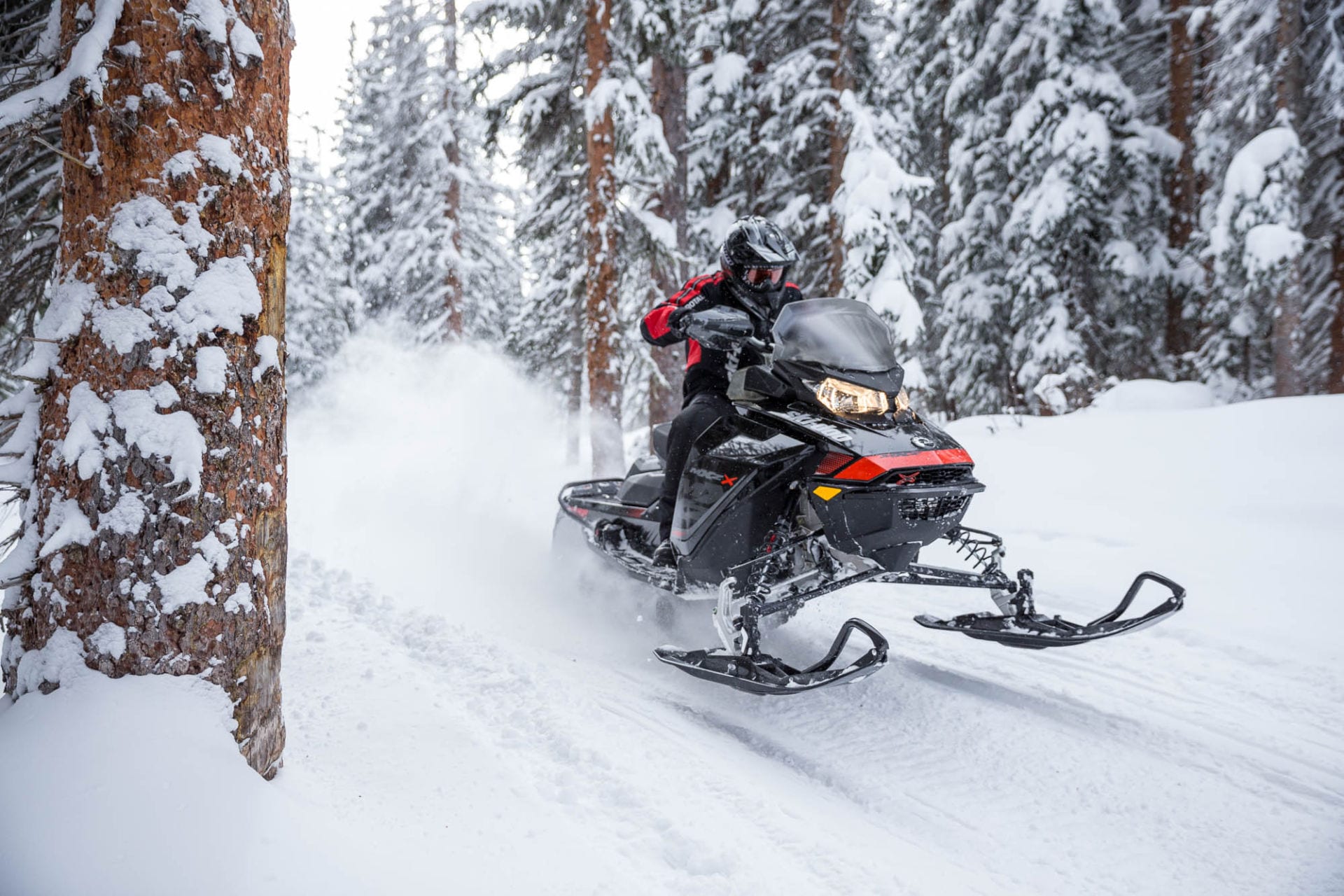
Moteur 850 E-TEC
Since the arrival of E-TEC technology, we have quickly become accustomed to exceptional fuel and oil consumption for 2-stroke engines, while at the same time significantly reducing odors. This year, BRP has completely overhauled its now famous direct injection system by offering a brand new 2nd generation electronic gearbox. The engine’s response is impressive, offering a 30% quicker reaction at the touch of the throttle. Of course, the integrated design of the new maintenance-free P-Drive pulley is probably not unrelated to this performance. With similar fuel consumption to the 800R E-TEC and even lower oil consumption, the addition of 50cc represents an extra 10hp for a total of 165hp for the new mill. A very important evolution is the announced improvement of the engine’s reliability and durability. In fact, most 800cc 2-stroke engines are expected to last between 10 and 15,000 km. However, our sources tell us that BRP is aiming for 20 to 25,000 km thanks to proven technologies from 4-stroke and diesel engine concepts. This concern of BRP to tackle the durability of 2-stroke engines is seen as a major advance in the industry, especially for long-distance riders who often cover several thousand kilometers each season.
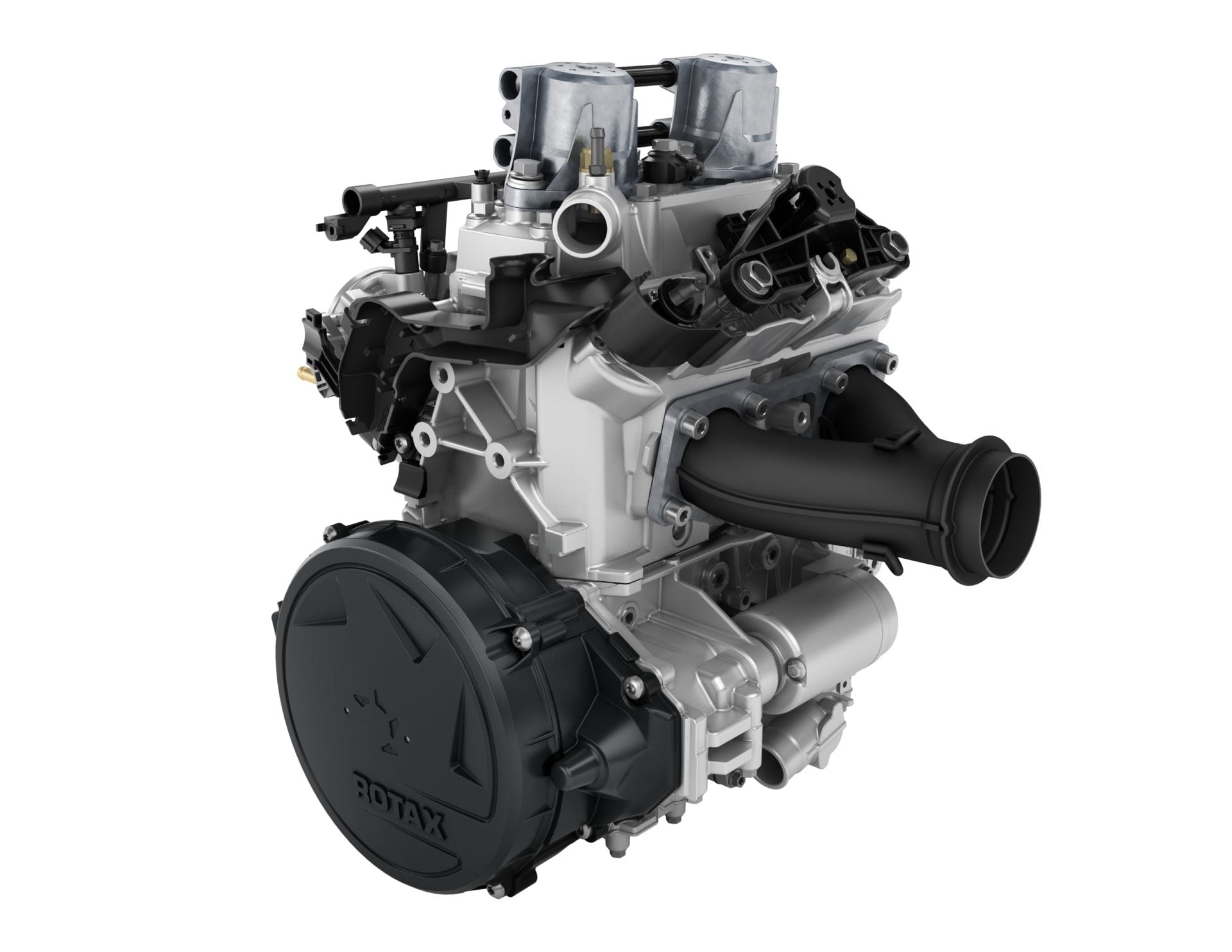
Summit SP and Summit X next generation
Without going back to the exceptional response and acceleration of the 850 E-TEC engine, it is clear that for a mountain snowmobile, these advantages are essential for this type of vehicle. In this market segment, handling and reaction speed remain key, as does the ease of cambering the snowmobile left and right. Once again, the centralization of the masses significantly improves the vehicle’s handling. What impressed me the most during my tests last spring was definitely the improvement of the Summit’s side-hill climbing capabilities. Both in the reduction of the vehicle’s width and the shape of the side panels, everything has been thought of to reduce the drag in the snow during extreme camber. The new chassis combined with the lightened tMotion suspension gives a much wider and more controllable balance range than the previous generation. Since these snowmobiles are designed for deep snow, the new X-Series running boards actively evacuate snow, avoiding grip problems during fast rider maneuvers.
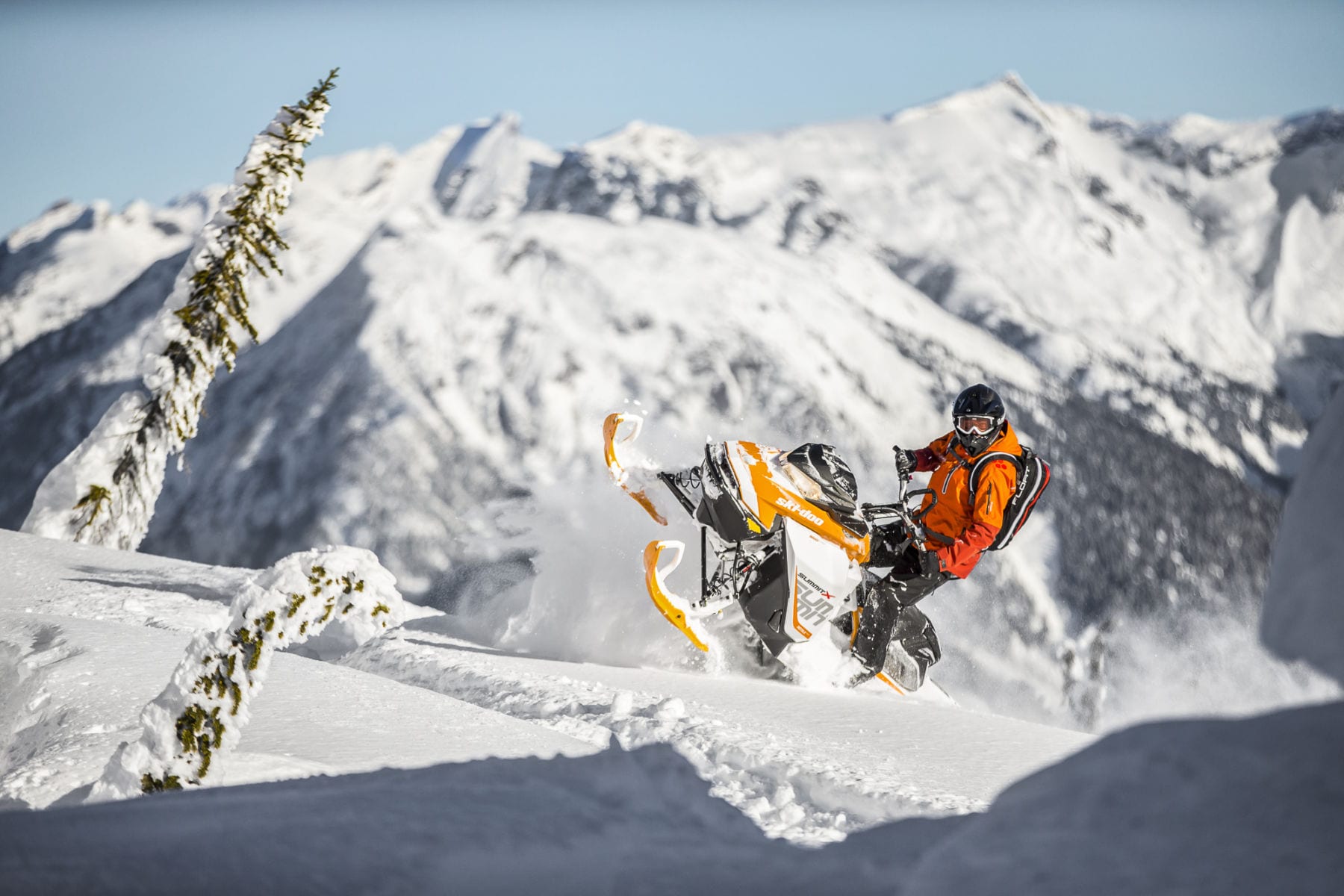
Les coups de cœur de Marc Thibeault
Last March, I had the chance to participate in SnowShoot 2017, the annual event that allows the world’s specialized media to test the models that will be offered during the next season. Being my 9th time attending, 2017 once again offered me the opportunity to test drive some amazing models and most importantly, pick my favorites. A heartbreaking moment if ever there was one, choosing only one vehicle per manufacturer is literally torture for a snowmobiler like me. Loving all categories of snowmobiles, it is a colossal challenge to have to choose 4 vehicles among the fifty or so I have personally tested. Each vehicle has its niche, its personality, its strengths and of course, its limitations. So that’s the mission I was given and I had to make my choices. That being said, you’ll see that in addition to my favorite vehicle by manufacturer, I’ve allowed myself a special mention for each of them.
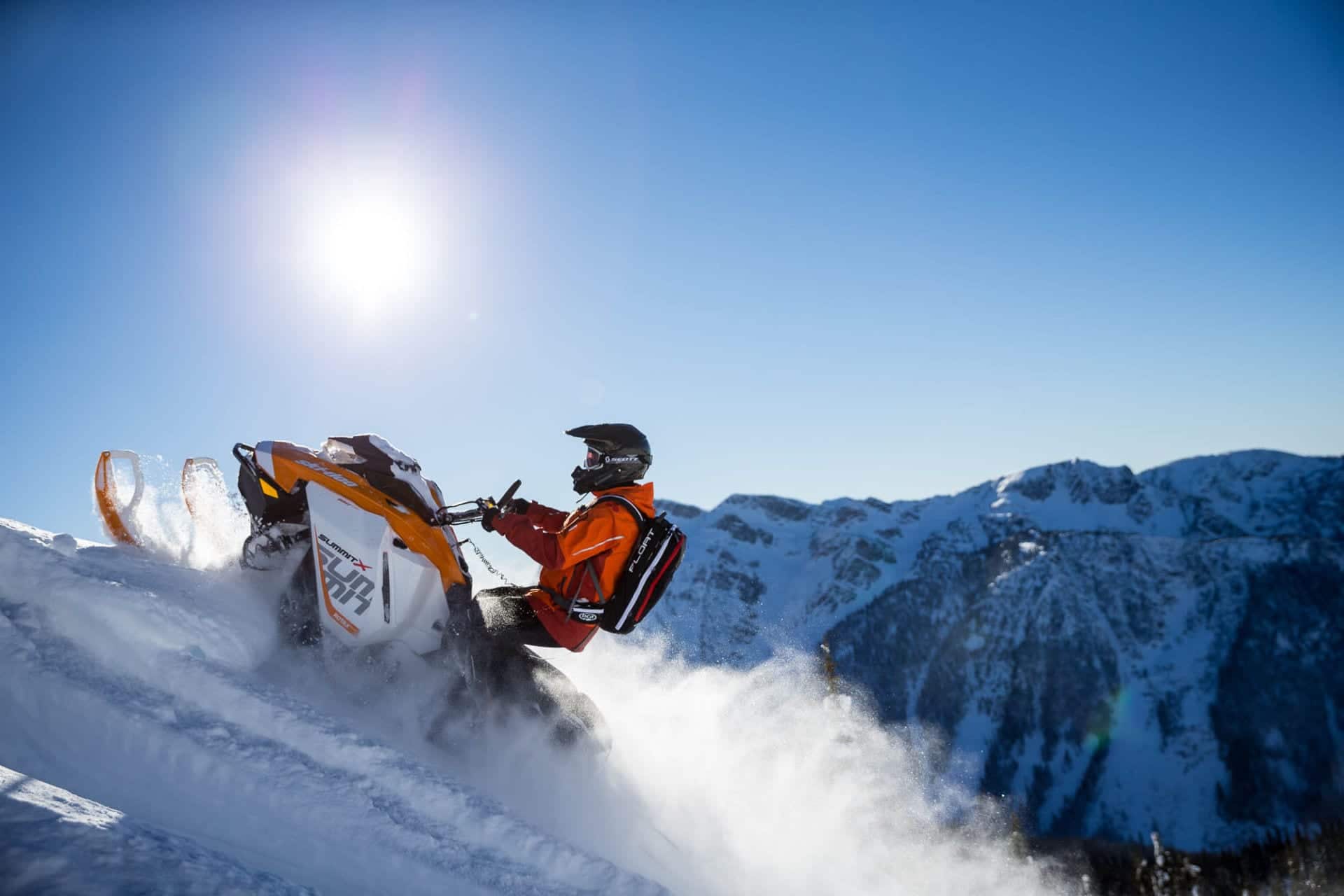
The Valcourt-based manufacturer has not made it easy for me in the past few years to choose my favorite. For 2017, it was still hard to choose the model, but at the same time, easier to choose the chassis and engine. With an all-new series of snowmobiles, aside from the award-winning rMotion and tMotion suspensions, the 4th generation REV chassis and its new 850 E-TEC engine were my target of choice. I therefore invested the vast majority of my testing at Ski-Doo on the MXZ, Renegade and Summit based on this new platform. It is obvious that for our market, the Renegade X 850 E-TEC appealed to me immensely, with its ideal configuration for our trails, its ultra efficient riding position, as well as the acceleration of the new 850 E-TEC engine. The new narrower seat makes it easier to make quick transitions in sporty riding, but lost a little comfort when flat.
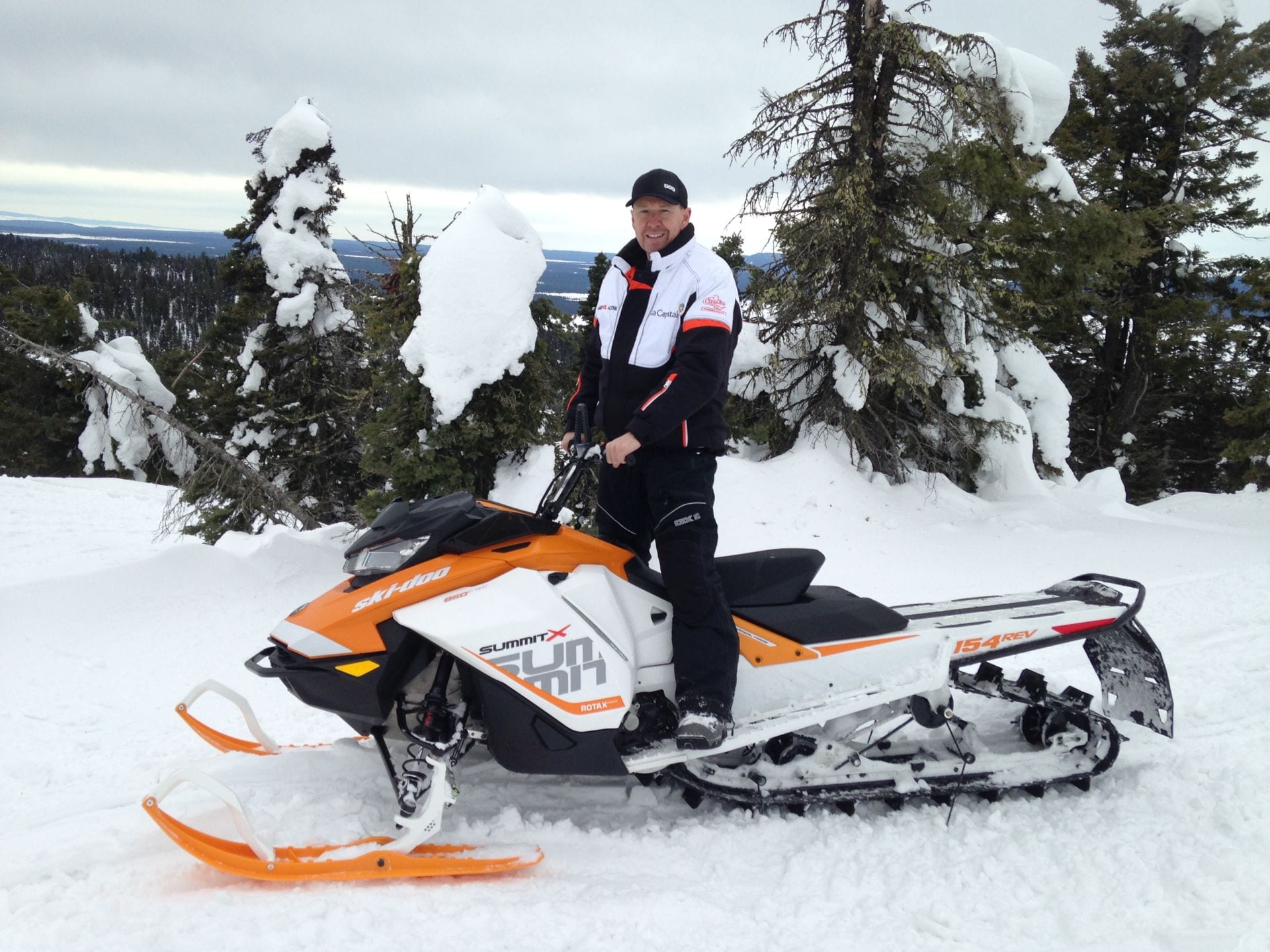
But my choice finally came down to the snowmobile that offered the greatest difference in performance between the previous year’s model and the new version. I chose the Summit X 850 E-TEC 154 mountain sled. The difference is most noticeable in the mountain segment, probably due to the great performance already offered by the Renegade and MX-Z of previous years. With the new Summit, one is quickly struck by the front-to-rear weight transfer that allows the vehicles to climb quickly on snow. In addition, the vehicle’s left-right balance makes it easy to turn on both sides. The side-hill balance range is much easier to maintain than the previous generation, which makes maneuvering easier for the rider. As already mentioned, engine pickup is truly exceptional and ultra-fast, thanks to the advances of the 2nd generation E-TEC fuel injection system. Although we won’t really be able to appreciate the durability improvements of the E-TEC engine for a few years, I really appreciated that a manufacturer is actually working on increasing the life of 2-stroke engines. This remains an important issue for us snowmobilers, as many of us ride more than 5,000 kilometers per year. The test drive of the new Summit X 850 E-TEC 154 was therefore my most pleasant surprise and my choice of Ski-Doo for 2017.





